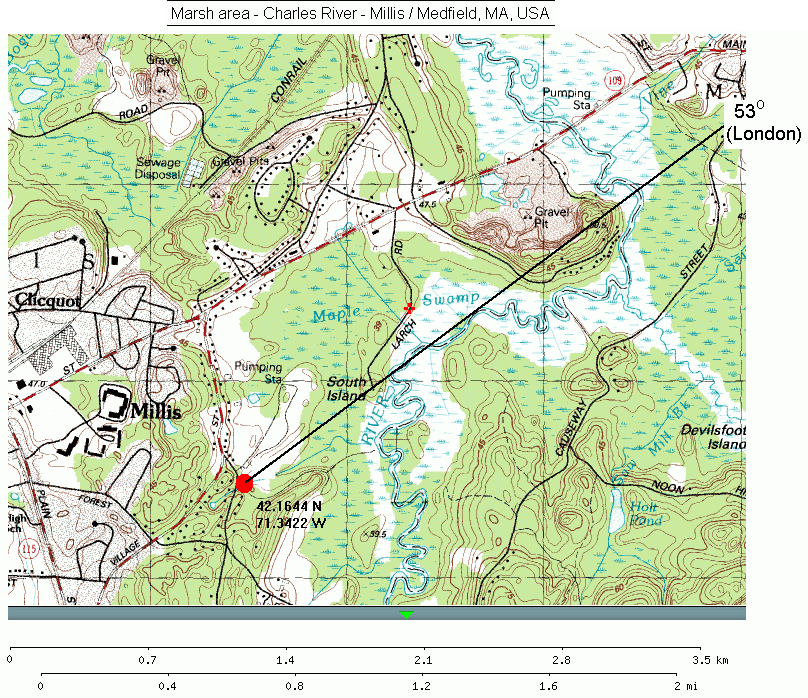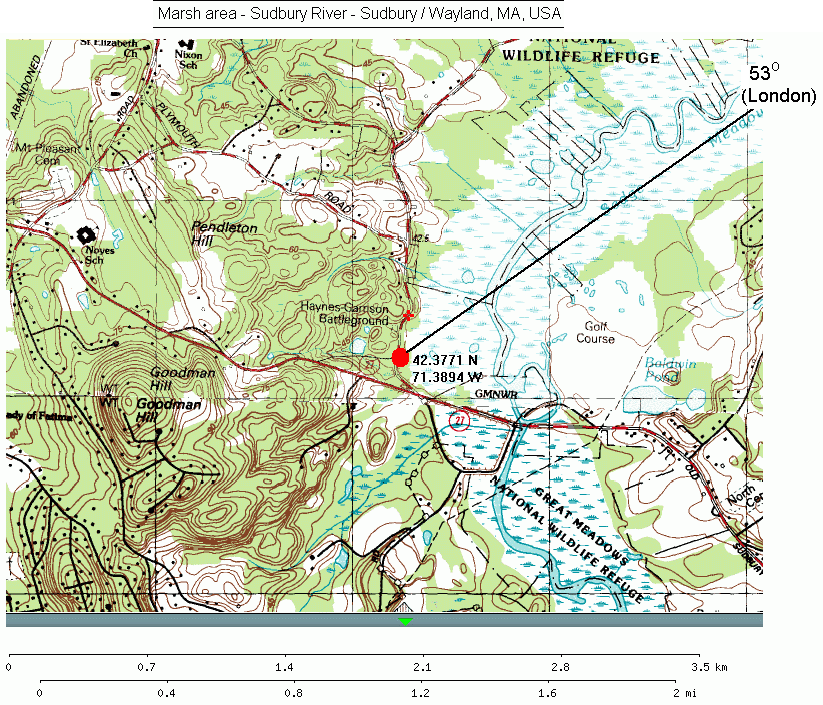Some of the Better Inland DXing Sites in Eastern Massachusetts
(for transatlantic reception in the 300 - 3000 kHz range)
Mark Connelly, WA1ION - 19 AUG 2005
In the eastern United States, the best receptions of medium wave broadcast and 160-m amateur signals from Europe, Africa, and the Middle East are generally at seacoast locations.
There are some inland sites which can offer advantageous receiving properties as compared to the general run of "average" inland sites in the surrounding region.
Certainly at higher frequencies, high elevation above average terrain (at least on desired bearings) is the dominant characteristic of a superior location.
While height can still help below 3 MHz, often of greater value is a level open site that has minimal obstructions towards, and a good ground conductivity profile on, bearings of interest. If there is poorer conductivity ground or hill blockage in other directions (towards potential interference signals), that can be an additional beneficial factor.
Inland freshwater marshes and wide valleys around slowly-moving rivers are among the better sites to be found away from the immediate coast. If there aren't many large buildings along the watercourse and if vegetation is typically low-profile grasses rather than tall timber, a good minimal-obstruction view results.
Open fresh water (lakes, ponds) is not, in most cases, highly conductive. On the other hand, marsh areas, even freshwater ones, are superior because of the large amount of organic matter from decaying plant and animal remains. These "muck" ingredients suspended in the water can improve conductivity because they contain a rich stew of salts and other minerals that were once part of plants, insects, fish, birds, and mammals.
Topographic maps below cover some of the better inland sites of eastern Massachusetts. Because these sites are about 20 miles / 32 km from the seashore, there may be some small amount of coastal gain influence but most of the advantage is from the local character of the site within 2 miles / 3 km of the selected receiving position (shown by the red dot on each map). Maps show the approximate 53 degree bearing axis to London.
Empirical comparisons with nearby "dry" sites have shown that these properly-aligned inland marshes exhibit gains on the order of 5 dB in the "front to back" ratio of European medium wave stations as compared to opposite-direction interfering domestic signals. While certainly less dramatic than the improvement noted at the seashore, it shows that a properly-chosen inland site still can have value.
=====

The Millis-Medfield, MA site has a good profile to Europe (and also to downtown Boston: WBZ transmitted from nearby before moving to Hull, MA in 1940). Back before AM car radios were 10-kHz stepped, I'd hear "bang-up" signals from the UK, France, Germany, etc. when driving through the area on Route 109.
=====

The Sudbury-Wayland, MA site showed value when I used to drive through there westward on Route 27 back in 1975 and 1976 on Boston-to-Sudbury evening homeward commutes. Langenberg, West Germany on 1586 went from a strong heterodyne against then WQQW-1590 (CT) up to clear dominant audio as I got out to the point where Route 27 crosses the wide marsh around the Sudbury River. In the late 1960's, Roger K1CZH (now W1OJ) lived a bit up the hill on the western side of the marsh. He could always blast a serious signal into Europe from that site as well as being able to hear a number of European medium wave broadcasters.
=====
Click here to return to top

